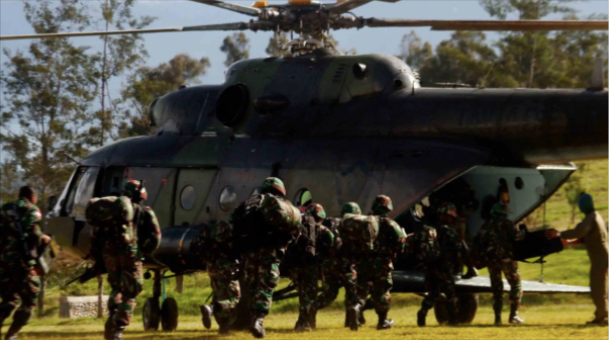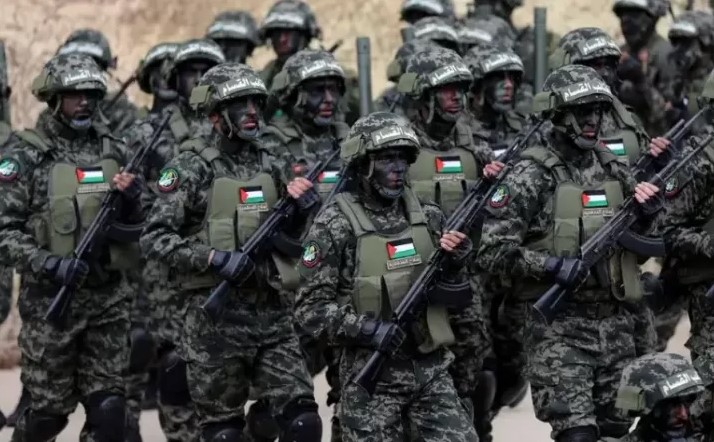
STRATEGIC ASSESSMENT. Indonesia made major purchase announcements of fighter jets from United States and French manufacturers this week in the biggest military buying spree in recent years, raising concerns over government spending as the nation rations funds to recover from COVID-19. The procurement plans spotlight a growing arms race in the Indo-Pacific region, following the surprise announcement last year of a security partnership between the United States, Australia, and the United Kingdom.
The Defense Security Cooperation Agency (DSCA), an agency under the U.S. Department of Defense, announced the possible sale of F-15ID aircraft and related equipment to Indonesia in a deal valued at up to $13.9 billion on Thursday, just hours after Indonesia and France signed a purchase agreement for the first six of 42 Rafale fighter jets as part of a contract worth of $8.1 billion.
The DSCA notified the U.S. Congress of the possible sale on Thursday. Despite approval by the State Department, the notification does not indicate that a binding contract has been signed or that negotiations have concluded.
An Indonesian Defense Ministry spokesperson confirmed the latest update from Washington, but added that the purchase was still in the “exploratory” stage. Defense Minister Prabowo Subianto told lawmakers early last year that his office was interested in procuring both Rafale jets from France and F-15s from the United States.
Military analyst Connie Rahakundini Bakrie said that while the purchase of the Rafales from France has been finalized, Prabowo still needs to explain to the public about the high cost of procuring advanced military equipment at this time. Connie emphasized that the purchase of all defense equipment must have a clear reason, especially when Indonesia’s defense equipment budget has increased by 500 percent. She said the ministry owed it to the people to explain how the government would be paying for up to 78 new fighter jets from France and the United States.
While Indonesia’s defense spending has increased significantly in the last few years, the portion of defense budget to gross domestic product has remained stagnant at 0.7 to 0.8 percent in the last 15 years, argued Andi Widjajanto, senior analyst in political security at Laboratorium Indonesia 2045. As such, he said Indonesia was aiming to maintain its current force and modernize the obsolete weapons systems, but Indonesia will not have any significant breakthrough in its posture.
He noted that the government’s new strategic plan for defense modernization started in 2006 under then-president Susilo Bambang Yudhoyono. The current administration has to complete the third phase of its 2024 strategic plan, after which officials could reevaluate its strategic plan to ensure continuation until 2040.
House Commission I Muhammad Farhan on Saturday said the government expressed its intent to purchase six French-made 4.5-generation Dassault Rafale fighter jets but did not provide enough details. He said the jets would be purchased using foreign loans instead of the state budget only, which the National Development Planning Agency and the Finance Minister approved. He said the government has negotiated low interest rates on debt.
International affairs and military analysts see parallels between Indonesia’s efforts and China’s intentions to strengthen its military. Andi Widjajanto, Coordinator and Senior Analyst for Political Security at the Indonesian Laboratory of 2045, concluded that China is no longer focused on defense modernization but on strengthening military force.
According to Andi, China’s military modernization efforts since the early 2000s have been included into the country’s overall military strength rise (arms build-up). Andi said these two concepts are academic jargon for weapon dynamics. He said modernization of defense refers to a country’s attempt to replace its weapons with the same type and quantity without doubling its strength.
Indonesian Air Power Study Center (PSAPI) Chair Chappy Hakim on Thursday said he supports public debate following the Jan. 25 flight information region (FIR) cooperation between Indonesia and Singapore.
ICASL Indonesia Center for Air and Space Law (ICASL) Chair Atip Latipulhayat said although FIR is not directly tied to sovereignty, the bulk of FIR is separated by sovereign boundaries in practice. He said certain planes are required to obtain authorization from Singapore, and the reality is that the majority of planes that violated Indonesia’s air sovereignty in 2018 belonged to Singapore and the United States.
Military and intelligence observer Susaningtyas Kertopati on Sunday said the acquisition of fighter jets from other countries such as France and the United States was a definite strategy for regional and global power balancing. She said the acquisition of defense equipment, notably fighter aircrafts, from U.N. Security Council member countries is considered to have a significant deterrent effect. (Red/many sources)








